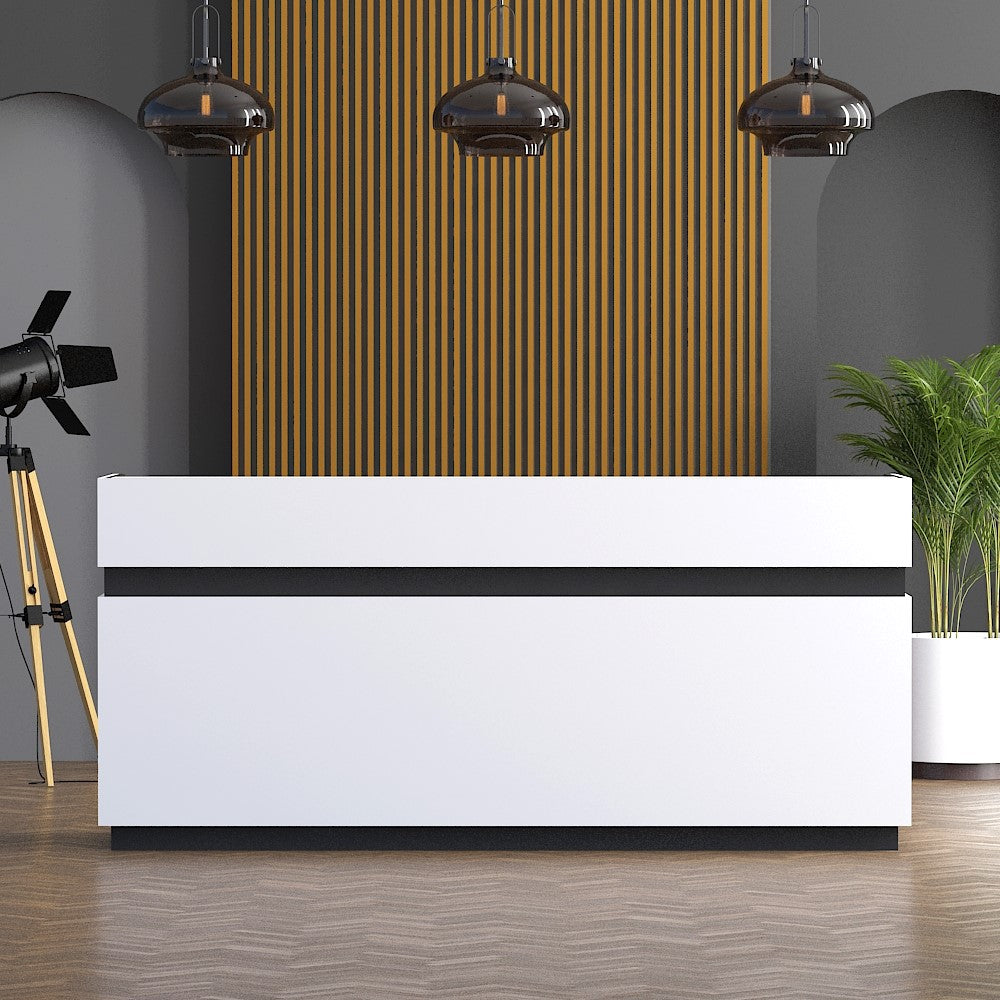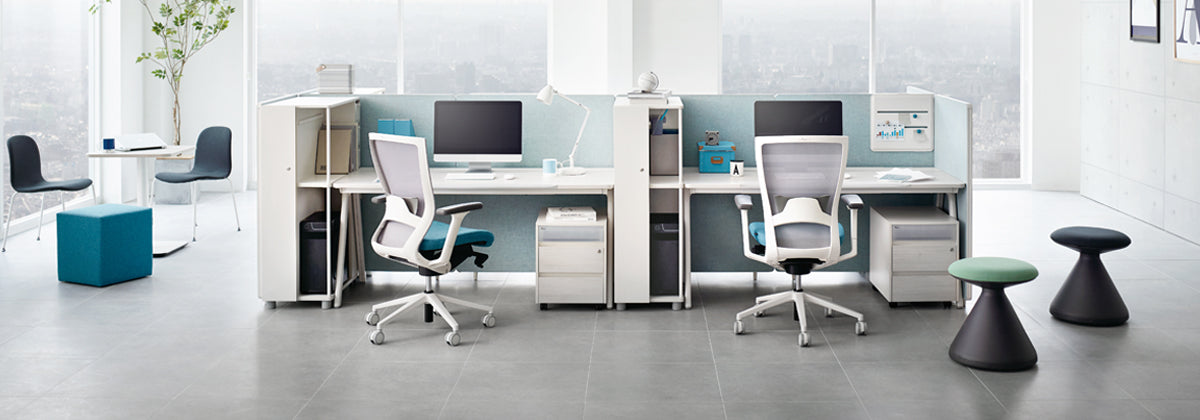Within today's fast-evolving workplace, eco-friendliness is becoming a vital factor of workspace design. Faced with a growing awareness of the impact that our decisions impact the Earth, green materials are in the spotlight in the development of office setups. The rise of telecommuting and flexible office spaces has highlighted the importance of creating work environments that are not only practical but also environmentally conscious.
Desks and tables are crucial in enhancing productivity and comfort while reducing carbon footprints. By selecting materials that are sustainable and ethically sourced, businesses can design workspaces that reflect their dedication to the environment. From the desk table office designs to computer workstation designs, there are a variety of options out there that harmonize aesthetics with functionality. This article examines the various eco-friendly materials and designs available for office workstation tables, helping organizations make informed choices for eco-friendly workspaces.
Benefits of Eco-Friendly Office Workstations
Sustainable office workstations offer considerable pros in promoting a eco-conscious workplace. By utilizing materials that are renewable, these workstations contribute to reducing overall ecological footprint. This transition can help businesses align themselves with corporate social responsibility goals, enhancing their reputation and appeal to environmentally aware clients and employees. Reducing dependency on finite resources promotes a more sustainable future for both the organization and the planet.
In addition to their ecological benefits, eco-friendly workstations can enhance indoor air quality. Many traditional office furniture items are crafted from materials that release harmful VOCs (volatile organic compounds), which can influence the health and well-being of employees. By choosing workstations made from organic materials or low-VOC finishes, organizations can create a more comfortable work environment, reducing sick days and boosting overall productivity and morale among staff.
Additionally, investing in eco-friendly office workstations can lead to sustained cost savings. Although the initial purchase price may be slightly higher, the durability and longevity of sustainable materials often mean fewer frequent replacements and maintenance. Additionally, energy-efficient designs can additionally reduce operational costs by minimizing energy usage. Ultimately, opting for eco-friendly workstation solutions not only benefits the environment but also supports the financial health of the organization.
Varieties of Sustainable Resources
Eco-friendly workspace workstation tables can be constructed from various sustainable resources that reduce environmental effects while offering strength and functionality. One popular option is bamboo wood, which is not only durable and lightweight but also grows rapidly and requires few resources for growing. This makes it an excellent option for those looking to design a workspace that is both stylish and sustainable. Additionally, bamboo products often features a modern design that fits contemporary workspace designs.
Upcycled resources are another alternative for constructing workspace workstations. Furniture made from reclaimed timber, metal, or plastic helps divert waste from dumps and lessens the need for virgin resources. This method not only saves natural materials but also adds a distinct character to each item, as reclaimed materials may have histories and history. Businesses that focus on sourcing recycled materials often demonstrate their dedication to eco-friendliness, drawing ecologically aware customers.

Lastly, producers are more often using materials derived from natural fibers, such as natural cork and hemp, to create eco-friendly products. Cork is harvested from the bark of cork trees without damaging them, making it a renewable resource. Its light and durable qualities make it ideal for workstation tops. Similarly, hemp is a quickly maturing plant that requires fewer water and chemicals compared to conventional materials, which translates to a smaller ecological impact. By incorporating these innovative materials, office workstations can combine both eco-friendliness and style.
Design Factors for Eco-Friendly Office Stations
As designing eco-friendly corporate table tables, the selection of resources is critical. Selecting for responsibly sourced timber, bamboo materials, or upcycled metals can significantly reduce the environmental harm. Items made from Forest Stewardship Council certified timber ensures that the materials come from sustainably administered forests, promoting eco-friendly woodland practices. Incorporating https://officestore.ae/collections/workstation-table minimizes waste but also supports to a circular economy, making the workstation not only functional but also environmentally responsible.
Ergonomics plays a vital role in the design of green workstations. Flexible height features can promote a better work stance and enhance comfort. Configurations that enable easy modification or flexible setups encourage collaborative work while minimizing the need for additional supplies. By prioritizing user ergonomics and adaptability, workplace desk units can enhance productivity and well-being while maintaining an sustainable approach.
Integrating low-energy elements into workstation layouts can also improve their sustainability. For example, implementing cord management solutions cuts down on clutter and facilitates the use of sustainable devices. Additionally, explore using low-VOC finishes and paints to enhance indoor air quality. By blending visual attractiveness with practicality and sustainable responsibility, these design aspects create a congruent workspace that aids both staff and the earth.


Affordable Eco-Friendly Choices
As you searching for budget-friendly green options for workplace desk tables, explore materials that are both sustainable but also budget-friendly. Bamboo is a wonderful choice as it is a fast-growing plant that needs few resources to produce. Several companies manufacture bamboo workstation tables that feature a stylish aesthetic while being budget-friendly. Additionally, bamboo is long-lasting and can handle daily use, making it ideal for workplace environments.
Reclaimed wood is an excellent option for creating a unique and green workstation. This material often comes from old barns, items, or wooden pallets, minimizing the need for new lumber and the effects associated with deforestation. Numerous office furniture shops have reclaimed wood tables at affordable prices. These tables not only have a characteristic character but also contribute to a circular economy, encouraging the reuse of resources.
Ultimately, consider workstation tables made from upcycled components, such as aluminum or plastic. Producers are more and more creating office furniture from recycled components, ensuring that these products are not only eco-friendly but also economically viable. These options provide durability and design, often at more affordable prices than new products made from virgin materials. Through adding such choices, you can create a sustainable workspace setup without going over budget.
Emerging Developments in Eco-Friendly Office Furnishings
As businesses increasingly focus on eco-conscious responsibility, eco-friendly office furnishings is poised to evolve considerably. One key development is the incorporation of reclaimed and recycled resources in the construction of office workstation tables. Manufacturers are concentrating on obtaining materials that reduce waste and decrease the carbon impact associated with production. This shift not only supports the planet but also caters to a growing consumer preference for sustainable products.
Another development is the rise of modular and adaptable office workstation designs. These versatile solutions allow companies to enhance their office environments based on evolving needs while using less materials overall. By choosing workstation tables that can be quickly rearranged or expanded, offices can maintain functional environments without the need for frequent replacement or disposal of furnishings. This flexibility also supports a dynamic working environment, fostering collaboration and creativity.

Finally, technology is playing a crucial role in the future of sustainable office furniture. Smart office designs are becoming more popular, with features such as low-energy lighting and integrated power outlets. These innovations not only improve user convenience but also align with eco-friendly goals by reducing energy consumption. As the demand for sustainable designs continues to grow, we can expect to see even more innovative methods to office workstation furnishings that prioritize both practicality and ecological stewardship.
